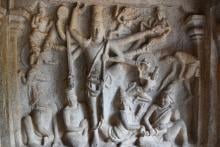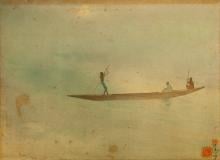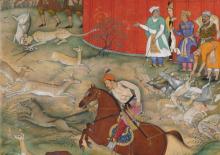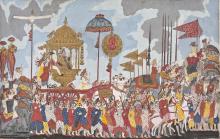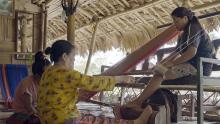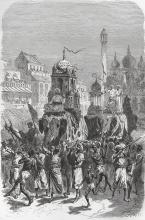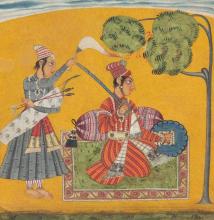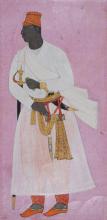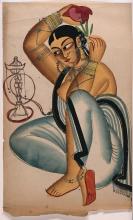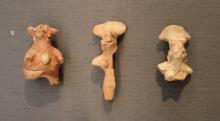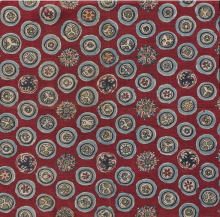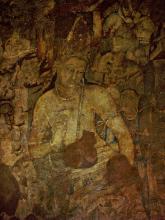Humanities
News
05 Nov 2023
The QS Higher Education APAC Summit 2023, a pivotal event for academics and administrators, will take place in Kuala Lumpur from 7-9 November 2023. In a noteworthy precursor to this, Lingnan University successfully hosted a Pre-Summit APAC 2023 at its Hong Kong campus today (3 November 2023). The pre-summit was particularly focused on liberal arts, and it explored the ongoing evolution of these disciplines along with the increasing impact of technology in and beyond the classroom.
20 Oct 2023
The Cholamandal Artists' Village was established in 1966 to encourage self-sufficiency, community living and the creation of a South Indian visual identity. Since then, it has undergone a transformative journey. Discover its history and achievements.
09 Oct 2023
Lingnan University will confer Honorary Fellowships upon three distinguished individuals in recognition of their outstanding achievements in their professions and valuable contributions to the community.
09 Oct 2023
Between the seventh and ninth centuries, south peninsular India experienced a cultural renaissance, resulting from the extensive patronage of a powerful dynasty, the Pallavas. Discover their unique contributions to the arts and literature of the time, which led to the creation of a new, Dravidian idiom of temple architecture in South Asia.
01 Oct 2023
To mark the 74th anniversary of the founding of the People’s Republic of China, Lingnan University held a National Flag Raising Ceremony today (1 October) on campus at the Chan Tak Tai Auditorium. It was attended by the Council Chairman of the University, Council members, Acting President, Associate Vice-President, department heads, staff and students.
24 Sep 2023
Amidst the political tumult of nineteenth-century colonial India, Abanindranath Tagore — an artist from Bengal — set out to invent a new ‘Indian’ visual language, rejecting European artistic ideals. He pioneered a style that combined themes from mythology, history, and rural life, with elements from India’s miniature painting traditions. This would evolve into the Bengal School — a movement that reimagined a distinctly Indian approach to art. Tagore influenced an entire generation of artists and left a lasting impact on the quest for Indian identity during the struggle for Independence.
13 Sep 2023
Oriental literature in general, Vietnamese literature in particular, has many types of values, perspectives, new identities and unique similarities. Read on to explore......
12 Sep 2023
Lingnan University's Alumni Relations Team of Office of Institutional Advancement and Public Affairs (OIAPA) has organised its first-ever month-long themed café at the Jao Tsung-I Academy (JTIA) in Lai Chi Kok from 24 August till 23 September. With the aim of “Sharing Lingnan History with the community”, the “Lingnanian pop-up café” features unique characteristics of Lingnan's culture, heritage, and development milestones, along with “Red Grey Special Menu” and “Reading Corner” with historical publications. This initiative aims to enable the public to gain insights into the university’s storied history and remarkable achievements while fostering connections among alumni and Lingnanians, inviting everyone to savor the Lingnan legacy while enjoying the aroma of coffee.
11 Sep 2023
In the mid-sixteenth century, Mughal emperor Humayun brought two Persian master painters to India, who not only established an imperial atelier but also began a major tradition of miniature painting in South Asia — Mughal manuscript paintings. This painting tradition flourished for centuries, enjoying royal patronage and resulted in the illustration of significant literary texts, scriptures, biographies, dynastic histories and scientific literature. Known for their naturalism and intricacy, Mughal paintings also combined a range of influences — Persian, Indian and European — and were often made collaboratively by artists and other specialists in the imperial ateliers, known as kitabkhanas. Discover the legacy and lasting influence of this painting tradition and its eventual decline in the late eighteenth century.
28 Aug 2023
Traditionally woven in Gujarat, India, mashru — meaning ‘lawful’ or ‘permitted’ in Arabic — was invented to allow Muslims to wear silk garments despite injunctions against it in the Hadith, an important Islamic religious text offering teachings and moral guidance. The fabric’s innovative weaving technique, where each silk warp crosses six cotton wefts, keeps silk from touching the body when worn. Whilst the earliest visual references to mashru date back to the seventeenth-century in the Deccan region of southern India, the fabric has lived many lives, gaining popularity amongst Islamic populations in India, West Asia and Africa as it was traded along Indian Ocean maritime routes.
26 Aug 2023
Lingnan University (LU) organised a wide range of online orientation activities from 9 August to welcome new undergraduate students, and held the face-to-face New Student Orientation (NSO) and Official Welcome today (25 August).
17 Aug 2023
Japanese fossil forest found, AI finds a way to people’s hearts, Language diversity and child social development & Supplement for kidney disease. Plus Submissions open for Asia Research News 2024. Read all in the latest Editor's Choice.
14 Aug 2023
In the early seventeenth century, a new painting tradition — characterised by its use of bold colours, gilding and gem-setting — emerged in the Thanjavur region of southern India. While Thanjavur paintings originally featured gods and saints, the tradition grew to incorporate secular subjects owing to a range of influences over the next several centuries, including Mughal, Maratha, and European art. Thanjavur paintings continue to be popular as memorabilia and worship objects, and are one the most recognisable South Indian painting styles today.
14 Aug 2023
Greetings from JHSSR, Horizon is proud to announce the highly acclaimed publication of the latest issue of 2023, Vol. 5, Issue 1 (Jul. 2023).
The issue is now live at the Journal’s webpage. You may explore our range of contributions within this Issue. Explore this issue, click the links below.
31 Jul 2023
Lingnan University (LU) successfully hosted its two-day annual signature event, “Alumni Homecoming Weekend 2023” from 29 to 30 July, warmly welcoming alumni and their families back to reconnect and strengthen connections with old and new Lingnanians on LU campus. The “Alumni Homecoming Weekend 2023” featured a Mini Social Enterprise Bazaar, Rolling Books, NFT Pixel Art Workshops, Coffee Tasting Workshops, and a showcase and tutorial of smart table tennis, providing an opportunity for Lingnanians to share lovely memories together.
31 Jul 2023
Backstrap looms are portable weaving contraptions with a component that is tied around the weaver’s waist, thereby engaging the weaver’s entire body in the process of creating textile out of warp and weft. Historical and archaeological evidence suggests that these looms, which presumably date as far back as the Bronze Age in China, have been, and continue to be, used by indigenous communities worldwide.
19 Jul 2023
From big, permanent structures within imambaras to palm-sized ones made of cigarette boxes and coloured paper, tazias are replicas of the tomb of Imam Hussain which play a significant role in the rituals observed during Muharram. They were initially popularised by the Mughals for those royals who were unable to visit the actual tomb but the tradition continues, even today, when photographic images of the tomb are widely available — as a mode of creative expression or, perhaps more, as a performance of homage.
03 Jul 2023
Comprising over 750 rock shelters — of which over a hundred are painted — the Bhimbetka caves are perhaps the earliest known repository of art in South Asia. These prehistoric paintings illustrate hunting scenes as well as scenes of collective rituals and processions. Although their purposes remain unknown, Bhimbetka paintings provide immense historical information about humans, animals and their relationship with nature and culture.
19 Jun 2023
Elaborately carved with female figures and floral motifs, ringstones dating to the 3rd and 2nd centuries BC are amongst the most enigmatic artefacts of Mauryan and Shunga art. Scholars continue to speculate about their use, and believe that they may have been used as amulets and ritualistic objects or designators. Discover more about these ancient artefacts through this article.
04 Jun 2023
Beginning in the fifteenth century, until the nineteenth century, artists turned to classical music for inspiration, combining painting, allegory and music to create a genre known as Ragamala painting. Ragas — melodic frameworks central to Indian classical music — date back to nearly the fifth century, and each major raga is meant to evoke a particular mood or atmosphere, a season and a time of day. Ragamala paintings are distinctive for their nuanced depiction of emotions through environmental metaphors and imagery that often includes a hero or a heroine or both.
26 May 2023
Osaka Metropolitan University scientists found that Japanese and Chinese, who are considered to have high-context cultures with a high degree of reliance on information shared by the speaker and listener, are code-switching from high-context cultures to low-context cultures when communicating with people from each other’s country. Furthermore, the scientists found that the Japanese do not engage in much code-switching with Chinese students in Japan.
22 May 2023
From its origins as a wide sash worn as a part of ceremonial, military and everyday dress in the Indian subcontinent, to becoming a part of British military clothing that was thought to guard against cholera, the cummerbund has had a storied legacy. Read about how this humble accessory evolved over the years.
11 May 2023
- Target of implementing a faster and more efficient interface between semiconductor chips. Expected application in high-performance computing systems
- Plan to undertake task from June 2023 funded by the Samsung Future Technology Promotion Project
11 May 2023
- DGIST receives commendations from the President and the Minister of Science and ICT for expanding scientific research achievements, domesticating future technology, social contributions, and promoting and disseminating research outcomes.
08 May 2023
In operation from 1863 to 2016, Bourne and Shepherd was one of the first commercial photography studios in India, known for architectural, landscape and topographical photographs, as well as portraits of Indian nobility, British officials and European travellers. While these images found traction as souvenirs, the studio’s photographs were also widely utilised in the scientific community for the topographical and sociological study of the Indian subcontinent.
28 Apr 2023
Researchers discuss whether a "brain organoid" should be treated as a person by law, and suggest the need for legal and social discussions uncoupled from debates on consciousness.
23 Apr 2023
Born out of the changing society of nineteenth-century Calcutta, Kalighat painting was a popular medium among the patuas (painters) who worked in the vicinity of the Kalighat temple. Though these paintings were originally intended to be souvenirs for devotees visiting the temple and featured primarily Hindu imagery, they expanded over time to include other religious traditions as well as socio-political commentary.
26 Mar 2023
These figurines from more than 4000 years ago, provide insights into the material culture of one of the oldest Bronze Age Civilizations, the Indus Valley Civilization.
12 Mar 2023
Derived from the Gujarati word saras, meaning "beautiful", Sarasa cloth is believed to have been introduced to Japan as a trade textile by the Dutch during the Muromachi period (1336–1573).
26 Feb 2023
Ajanta Murals represent some of India's earliest and most significant examples of cave painting. Spanning from the second and first centuries BCE to the late fifth CE, they narrate stories of the Buddha through his life as various bodhisattvas. Read on to discover the iconography, style and history of Ajanta Murals.
Events
Sorry, nothing coming up for this discipline
Researchers
Sorry, nothing coming up for this discipline
Giants in history
Sorry, nothing coming up for this discipline




